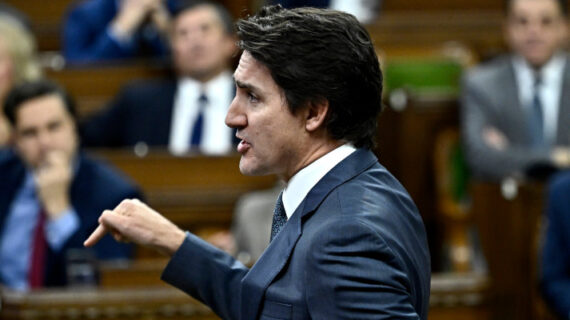North America’s skies have been abuzz with activity in the past several weeks, starting with the startling appearance of a Chinese spy balloon over North American skies on February 2, followed by three subsequent balloon-like devices that were detected and brought down by NORAD forces between February 10-12.
While only the first balloon shot down on February 4th has been identified by the United States as a Chinese spy balloon, there is some evidence to suggest that the subsequent incisions may be part of a single event. It is important to note that a significant portion of what follows are best guesses based on the available information, so take this all with a slight grain of salt.
What is the Chinese government doing?
Over the past few years, there has been mounting evidence of the Chinese government undertaking a major modernization and expansion of its strategic nuclear weapon capabilities. While this has primarily encompassed a modernization and enlargement of their missile forces, this can also be achieved by a better understanding of how NORAD operates—the capabilities of its radars, its communication system, or its organizational responses. This intelligence would allow China to improve its offensive capabilities collectively.
This sort of work mirrors the United States and its allies’ daily intelligence-gathering operations along the People’s Republic’s air and maritime borders.1On any given day there are several intelligence aircraft, such as RC-135s, P-8s, and RQ-4s, orbiting just outside Chinese and Russian airspace and hoovering up electronic emissions for analysis. Satellites play an important role in this system, but they cannot fully replace aircraft or other stratospheric systems. Unlike the United States, China does not have allies near North America where it can launch similar missions, which means they need innovative new solutions to achieve the same outcomes—balloons may well be their response.
Why balloons?
Balloons are sub-optimal solutions in a number of ways. Weather is highly unpredictable and relying on it can be highly problematic. However, the advent of much more capable weather modelling systems, as well as control systems on balloons, has provided more capabilities. In particular, changing the altitude of such balloons can allow a user to roughly control the direction of travel according to different wind patterns and even provide the ability to hover. Balloons also have the benefit of being able to stay aloft indefinitely and can operate at a slightly higher altitude, if required.
Certainly, this is all conjecture, but the different sizes, configurations, and properties of the balloons suggest a relatively complex signals intelligence gathering program, and possibly even a coordinated mission between the different parts.
The first balloon shot down off of the South Carolina coast operated at a very high altitude, over 60,000 ft, and displayed a high level of sophistication. The presence of a large solar panel array suggests that it required some levels of permanence—perhaps for control but more likely for a fairly powerful set of onboard electronics. U.S. officials have noted that a number of antennas protruding from the balloon’s gondola are “likely capable of collecting and geolocating communications.” This would fit in the potential signals intelligence mission, although other approaches might be possible—it may also contain onboard cameras or other sensor systems. Nevertheless, the balloon would also need to power communication systems to pass on telemetry onto satellites or other data transmitting nodes.
The three smaller balloons have similarities—they operate at lower altitudes, have similar configurations but unique shapes, and have an apparent lack of sophistication and no propulsion. At this time governments have been cautious to even label them balloons—possibly because their orientation better fits the description of a dirigible.2They also operate at much lower altitudes than the first “spy balloon,” (approximately 40,000 feet), which could pose a navigational hazard to civil aviation, which is likely one of the reasons why they have been intercepted over the continental United States rather than over the ocean.
The purpose of these balloons is not clear at this time, but several clues have been released. The unique geometric shaping of these objects and their metallic exterior may suggest they are intended to interact with radars. There are a number of benign civil applications for such systems, which is important to note. If it is related to the Chinese espionage efforts, however, it could be intended to obtain intelligence concerning NORAD’s operation, either independently of or in concert with other capabilities. Prime Minister Trudeau’s comments that there “is some sort of pattern” with all of the incidents in such a short period of time lends some credence to the latter option.
One possibility is that the three subsequent balloons could be intended to “provoke” NORAD radars in order to aid in signals intelligence. Once locked onto, the more sophisticated spy balloon or satellite systems can pick up the emissions for later analysis. Of interest is that all three have different shapes. This may be intended to present different radar profiles, requiring search radars to use different measurement techniques and provide more data for analysis. This sort of information would be of immense value to China or Russia in developing countermeasures and responses for their own weapons. Even simply knowing where the balloons were detected would be useful information. Still, until the debris is recovered, it is difficult to make any substantive conclusions.

Are these balloons a threat, or a new weapon?
Unlikely. Clearly, intercontinental ballistic missiles and hypersonic weapons are the core of China’s capability. This is likely just an intelligence-gathering campaign. However considering the ease at which the first balloon did penetrate North American airspace, the design could be adapted for more nefarious purposes, such as to disrupt communications or confuse radars.
Why was this not detected earlier?
Since the first balloon was detected, American officials have mentioned that there have been several incursions over the years. It is not clear whether these have been at the same scale as what has been observed in the past several weeks.
As the Washington Post reported, NORAD radars detected these previous balloons, but the signals processing systems did not identify them as a potential target. These systems look for specific patterns in vast seas of raw data to detect and track targets. Now that Canadian and American personnel know what they are looking for, NORAD detection systems are better placed to identify them going forward.
Why was an American F-22 used to attack the balloons?
Thus far, the location of all of the intercepts has occurred in locations closer to U.S. NORAD airbases. The Yukon intercept over Canadian territory was closer to Joint Base Elmendorf-Richardson near Anchorage, Alaska than the Canadian Forces base in Cold Lake, Alberta, while the Lake Huron intercept was only a few hundred kilometres away from Selfridge Airforce Base in Michigan. This is not at all surprising in the bi-national command structure—it’s not uncommon to have Canadian CF-18s intercept airliners over American airspace throughout the year.
It is important to distinguish the fact that the two different balloon types present different challenges. The “decoy” balloons, of which three have been shot down pose much less challenge—they operate at altitudes that CF-18s routinely intercept Russian bombers at. Moreover, the Lake Huron intercept occurred with an F-16: a fighter that has roughly the same capabilities as the CF-18.
The larger spy balloon would present far greater challenges, however. Canada does not possess the necessary supporting capabilities to undertake an intercept, which the CF-18 would be extremely hard-pressed to carry out.3The first set of challenges involves vectoring a fighter into the vicinity of such a high-flying balloon. This would require two aircraft types: a mid-air refuelling and an airborne early warning and controller ( AWACS). Canada’s refueller fleet is limited in its capability, and it possesses no AWACS. Thus any interception would require US support.
Once getting a CF-18 nearby the balloon, there are other challenges involved with the final stages of intercept—largely to do with the altitude and some limitations of the aircraft’s sensors, though they may be addressed by using different missiles. Or, if the balloon can be identified, through some other method. While Canada does not currently operate the AIM-9X missile (though it has procured it), it does possess the AIM-120C, a larger, more capable medium-range air-to-air missile. While it is better suited to shoot down the high altitude balloon, it also presents greater risks. Any misses, like that which occurred during the Lake Huron intercept, would result in a missile that could travel uncontrolled for hundreds of kilometres and be a threat to people on the ground. Thus, while technically feasible under some circumstances, it is highly questionable in practice, and Canada would be highly reliant on the U.S. military for support.
What now?
The key takeaway from the past two weeks’ events is that China is serious about its military modernization and is investing heavily in improving its capabilities. That was apparent to many military watchers over the past five years, but the balloon surveillance program only serves to drive this point home.
It shows the pressing necessity of NORAD modernization. Many of the radar systems and underlying infrastructure supporting them are nearing 40 years old and desperately require replacement in order to deal with the new threats being developed by China, Russia, and other adversaries. Understanding how the balloons fit in a broader Chinese government strategy should give any North American leader pause.




